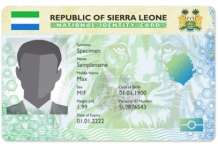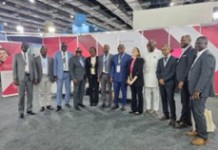By Amin Kef Sesay
Across the world, radio has been widely used as a tool for remote learning since the beginning of the COVID-19 pandemic. Such has happened in countries like Colombia, Liberia, Malaysia, and Rwanda, among others. But education radio is now being used in other engaging ways, not only to support distance learning but to enhance in-classroom teaching and the training of teachers.
Between 2014 to 2016, radio was used extensively to foster children’s education at home during the Ebola outbreak. Sierra Leone took a similar approach to respond to the impact of COVID-19 on learning.
According to UNICEF, school closures left nearly 2.6 million children out of school in the early phase of the pandemic. To avoid too much disruption and to help keep children learning, the country turned to educational technology (EdTech) tools like radio, TV, and mobile phones. The Sierra Leone Ministry of Basic and Senior Secondary Education (MBSSE) and its Teaching Service Commission (TSC) convened an Education Emergency Task Force to revive the country’s education radio program for remote learning.
As a response, the World Bank produced pragmatic guides called ‘Knowledge Packs’ to support policymakers in making quick yet informed decisions as they work with education ministries. For example, the Education Radio Knowledge Pack details timely learnings from successful radio programming across countries; evidence of the effectiveness of radio education; steps and costs for project implementation; and how to navigate the decision-making process. This initiative is part of the global program for Continuous and Accelerated Learning in response to COVID-19 supported with funding from the Global Partnership for Education (GPE), and implemented with UNESCO and UNICEF (acting as a consortium).
It was crucial to make the radio lessons accessible to learners. Sierra Leone broadcasts one-hour lessons over the radio, of which 30 minutes are dedicated to teaching, while the other half-hour is for students to call in a toll-free line to engage with the teacher. Lessons are also available on-demand on the government’s education website. In addition, print materials are distributed, and supplemental lessons are made available through mobile phones and television.
Teachers also organized themselves to leverage their knowledge and expertise. Those who have experience with education radio during the Ebola epidemic, including those from private schools, trained other educators during the COVID-19 pandemic. They met in socially distanced small groups to learn together and support each other. “We built education radio programs for literacy and numeracy for the early grade students. We also developed teaching manuals”, explained Dr. Staneala Beckley, Chair of Sierra Leone Teaching Service Commission in the Ministry of Basic and Senior Secondary Education. “Teachers decided to meet in small groups with appropriate social distancing to sit with those with radios, and follow along together and learn from group discussions of the lessons.”
To increase awareness about the radio programs, the country also ran a communications campaign leveraging social media, newspapers, advertisements, text messages, and announcements through community loudspeakers. Volunteers, civil society, religious groups, and the private sector were mobilized to spread awareness by playing sample lessons in their communities and widely sharing the broadcast schedules. “We wanted to reach as many people as possible with our education radio lessons in the marketplaces, in the carpentry shops. We produced jingles in English and in Creole, the language of mass communication in the country”, stated Dr. Staneala Beckley.
Covering the curriculum effectively has been challenging due to limited broadcast airtime availability, radio channels, and access to radio devices in households. Multi-grade lessons are engaging only to an extent, given the different pedagogical and lesson content needs of students across grades.
In addition, making the education radio program self-reliant to support multiple education radio lessons in a day has been difficult, since they need to broadcast programs that earn them revenue. It has also been challenging to measure impact, and plans are under development to partner with organizations that can support with this expertise.
Sierra Leone scaled up key resources during the pandemic: with 43 radio teacher presenters and 44 hours of lessons broadcasted per week, it doubled the number of radio studios used to develop and broadcast radio lessons to its students in 2020.
The country also leveraged and adapted key lessons from its experience with Ebola. Student performance data has been used to guide the prioritization of lessons. Programs delivering gender-based messages have been added to the broadcast in response to the high number of pregnancies among young girls during Ebola-led school closures. Lessons for younger students are scheduled earlier in the day. Multi-grade lessons combine content from multiple grades into one lesson. Lesson broadcasts are being repeated to increase access.
The coverage and inclusivity of education radio lessons can be high. Radio is mostly free, has high penetration rates in countries with limited access to cheap internet, and does not require special skills to access it. Radio programming can be scalable, cost effective, and easily delivered in local languages. It can be engaging, with adaptable content to listeners (when using IVR), and has proven to improve learning outcomes.
Sierra Leone’s experience shows that education radio is ideal for countries where household radio reach is significantly greater than access to connectivity and other devices. It can be extended beyond the short term to support out-of-school children and teachers, as well as a standard operating procedure for education during emergencies.




